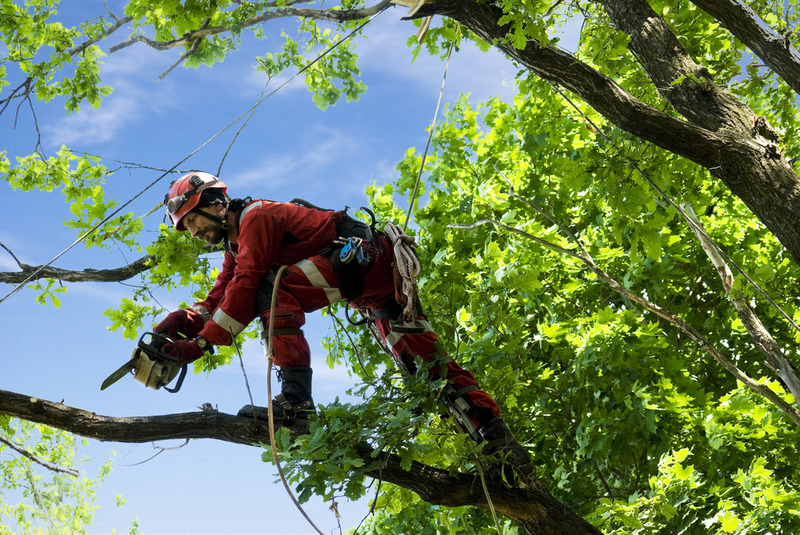With their striking beauty and imposing presence, maple trees are a great accent to any landscape. If you are the proud owner of these stunning trees, you undoubtedly want to ensure their continued health and growth. A vital component of caring for maple trees is knowing what is best time to trim maple trees for optimal growth. Let’s go into the specifics of trimming maple trees, talking about when it’s ideal to do so and how to keep them in outstanding condition.
Comprehending the Life Cycle of Maple Trees
Before discussing the specifics of when to chop your maple trees, it is important to know how long they will last. Just like many other deciduous trees, maples have distinct seasonal fluctuations. The tree’s growth and development are influenced by all four seasons, from the vivid spring blossoms to the lush summer and flaming autumn colors.
Spring Awakening: The Initial Chance for Trimming Maple Trees
With longer days and warmer temperatures, springtime heralds the return of nature. This is a terrific time of year to prune your maple trees for the first time. Any dead or broken branches should be gently trimmed before new growth starts in the early spring. This enhances the general appearance of your maple tree and helps to maintain a healthy canopy.
Timing Is Everything: Things to Consider in Late Winter
Another best time to trim maple trees is in the late winter. While the tree is dormant in late winter, this work should be done to promote rapid spring development. But it’s imperative that the trimming be finished before the tree reaches its active development stage. Choose days in late winter that have the promise of spring in the air, but are still rather cold.
Summer Pruning: Handling Small Modifications
Summer isn’t completely off-limits for trimming, though the most of it happens in late winter and early spring. This season, pay attention to small changes. Eliminate any unwelcome new growth and prune any branches that could be impairing the tree’s general structure. Take care not to cut off too much foliage because the tree depends on its leaves for photosynthesis.
What Is the Best Time to Trim Maple Trees?
Just as important as knowing when to trim is learning how to recognise the warning signals that your maple tree needs to be trimmed. A tree’s health may be jeopardized by unhealthy or dead branches, so keep an eye out for them.
Additionally, it’s best to step in and make the necessary trimmings if you see branches rubbing against or crossing one another.
The Dancing of Autumn Leaves: Things to Consider for Fall Pruning
As autumn draws near and the leaves begin their captivating display, you may be wondering if October is the right season to prune maple trees.
While large-scale trimming should be avoided in the autumn, you may take care of smaller problems. To preserve the tree’s shape, cut off any unhealthy or dead branches and, if needed, lightly shape the tree.
Methods of Trimming Maple Trees
After determining the ideal seasons and best time to trim maple trees, let’s examine the methods that will guarantee your pruning efforts provide the most outcomes. Recall that good technique is essential to your maple tree’s health and beauty.
Selective Pruning: A Precision Technique
Pruning your maple tree should be done selectively. Rather than implementing a methodical pruning approach, concentrate on particular branches that need care. You may shape the tree using this approach of selective trimming, which reduces shock and stress on it.
Clear Cuts for Robust Development
To get accurate cuts, make sure your pruning tools are clean and sharp. Rough or ripped edges might provide bugs and illnesses with access opportunities. A clean cut lowers the chance of problems and encourages quicker recovery.
Honor the collar of the branch: Nature’s Adhesive
The enlarged region where a branch joins the trunk is called the branch collar. It has certain cells in it that help the body repair. When pruning, make your cut slightly outside the branch collar rather than too near to the trunk. This honors the tree’s inherent healing processes.
A Story of Trimming: Caring for Your Maple Tree
Imagine the following: a bright, late-winter day, with a light wind blowing through the trees, and your tall maple tree, ready for your attention. Equipped with a sharp eye and pruning scissors, you set out to take care of your cherished tree.
You can almost see the brilliant flash of green that will soon grace the canopy of your maple as you carefully prune away dead branches. Every pruning is an act of kindness, a step towards maintaining the health and life of the tree. Nature’s masterpiece is sculpted on a canvas during the dormant season.
The Value of Continual Maintenance
In addition to understanding when to prune maple trees, consistent upkeep is essential for a healthy tree. Throughout the year, keep an eye on your maple and take quick action as necessary. Examine often for indications of pests, illnesses, or structural issues that could require trimming.
Seasonal Visits: An All-Year Devotion
The management of maple trees is a year-round commitment rather than a one-time task. Seasonal check-ins let you become aware of your tree’s evolving requirements. Each season has its own set of needs for the health of your maple, from the delicate spring flowers to the vivid autumn hues.
FAQs
When is the best time to trim maple trees?
When maple trees are dormant, in late winter or early spring, is the ideal time to prune them. This promotes strong growth in the spring. Summer is a good time to make small tweaks, though, and autumn is a good time to take care of little problems.
How frequently should my maple tree be pruned?
A healthy maple tree requires regular upkeep. Throughout the year, carry out seasonal check-ins and quickly resolve any concerns that arise. The dormant seasons are usually when major trimming is done, however little tweaks can be made as needed.
Is it okay to trim my maple tree in the autumn?
Even while significant pruning should be avoided in the autumn, you may take care of little problems like getting rid of dead or diseased branches. To keep the tree from being stressed during this season, severe trimming must be avoided.
What are the telltale symptoms that my maple tree needs to be trimmed?
Keep an eye out for branches that are sick or dead, as well as those that cross or rub against one another. These symptoms mean that your maple tree needs to be pruned in order to keep it looking good and healthy.
Which pruning methods are appropriate for my maple tree?
Use a targeted pruning strategy, focusing on the branches that require care. To ensure precise cuts, make sure your pruning tools are sharp. Additionally, always respect the branch collar by letting the tree recover on its own.
Conclusion
In summary, knowing the best time to trim maple trees is an essential part of being a responsible tree owner. You enhance the general health and attractiveness of the tree by coordinating your pruning activities with its natural lifetime. Keep in mind how crucial it is to be exact, tidy, and mindful of the tree’s natural processes.
Imagine that you and your maple are partners in this tree-care endeavor when you set out on it. Observe its development, pay attention to its demands, and let each trimming session be an ode to the tenacity of nature. Your maple bears witness to the eternal cycle of life and the beauty of well-considered care in the dance of the seasons. Happy cutting!




